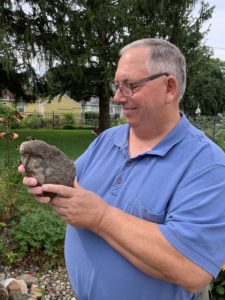 Going back to college as a retiree was all good until it was sorta not. I was hanging out with the cool kids, Wow look at me, the old person in a class of 20ish-year-olds. I am riding the bus, studying, reading, writing papers, joining in class discussions. It kinda made me feel special.
Going back to college as a retiree was all good until it was sorta not. I was hanging out with the cool kids, Wow look at me, the old person in a class of 20ish-year-olds. I am riding the bus, studying, reading, writing papers, joining in class discussions. It kinda made me feel special.
Being the novelty act was cool at first. However, being cool was not the reason I was back at college. I was there to build a better base of knowledge about communications so could I get better at this blog.
All I needed to do is get a C or higher for 34 credits of various Communications Studies classes and I would be awarded a second major from the 35th highest ranked University in the world. Easy peasy.
The 34 credits at $10 a credit would only cost $340. Plus $50 to $125 per class for books. Compare that to the current official estimated cost of $28,822 per year for an in-state ($48,620 for non-resident) full-time U of MN student. It is a great deal for me. I was risking $340 for a degree, the other students were paying $28,000 / $48,000 per year for four years to get their degree. The other students were polite and nice but they had a lot more at stake than I did.
Being a senior citizen college student is no longer a theoretical thing for me. To date, I have completed nine of the thirty-four required credits. I got an A for two of the classes and an A- for the other. I could cross the finish line with only about 8 more classes.
Here is what it feels like. First off, in reality, studying, reading, working in small groups, writing papers, joining in out of class discussions took about 8 – 10 hours a week. Add to that the actual three-hour class each week plus the time to get there and home. It takes a lot of time to be a student at the U of MN.
Reading college-level textbooks is less fun than reading Harry Potter books. Taking tests is every bit as nerve-wracking as it was when I was younger. I am older than the professors so they are no longer as intimidating. However, as it was 45 years ago, professors still have weird and annoying idiosyncrasies. They talk about themselves a lot.
Most students in my classes were in school for the expressed purpose of getting a degree so they can get ahead in life. At least a dozen times I was called on by the professor to give real-world examples of where the lesson being taught would be helpful to get ahead in the workplace. At first, it was flattering. After awhile I wondered where were the examples of how this knowledge or these skills would help me in my future.
So, yes it was a bigger time commitment than I thought it would be. Yes, I had life experiences that already taught me much of what was being taught. However, to be fair, most of the time, I was being taught stuff I did not know previously.
Linda and my friends were very supportive. However, I didn’t know anyone close to my age who was also taking college courses. Knowing someone in the same boat as I was; who would understand, relate to and discuss the experiences and feelings I was going through, would have been nice.
Not knowing other college students my age sometimes made me feel isolated. I kept reminding myself to suck it up, a sense of isolation is probably inevitable. Choosing an activity different from what your friends choose means you are not sharing the same experiences they are experiencing. That feels like isolation.
I have no regrets but I am taking time off from college for now. Not sure I will go back. I no longer plan to complete my Communication Studies major. More likely I will attend a few lectures here or there. I may take an online MasterClass. Several people have suggested I join the Writers Guild or another similar writing group.
My actual goal was to improve my blog by learning more about communications. I learned much from the classes, but mostly I learned from my fellow students. The communication studies students are masters at using connected tech. They know how to research quickly and well. They know the technical side of editing, words, sounds, videos, and pictures. They have an arsenal of apps and know how to use them. Posting on social media takes them seconds and that includes resizing the image appropriately and making a witty comment.
I had to learn connected tech as an adult. Twenty-year-olds never knew a pre-connected tech world. Connected tech is second nature to them. I doubt I could ever catch up to their skill level.
I am proud that I was able to hold my own with them. Sure, I was able to give them a little information/advice about the working world but that same advice is probably also found with a simple search.
The number one thing they taught me: No matter what you heard or read and no matter who said it, do a quick search to check if it is legit and what other relevant factors are involved. Then be technically prepared to present what you found in an easily understood, meaningful, way. I’ve seen them create a simple graphic in minutes that explains more than a long essay possibly could.
In the end, it sort of came down to Do I want to spend multiple years getting this second major (one class a semester, eight classes needed = four years of classes) or would it be more fun to do other interesting things. Choices need to be made: road trips or classes. It is hard to do both.
What you perceive depends on how close you look; Scaleandperception.com
